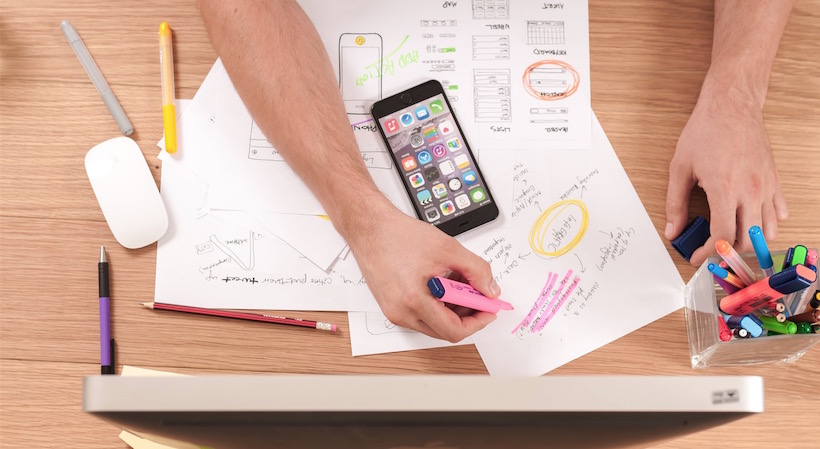We’ve learned a lot at Aesthetic about how early stage companies can best leverage design to become more valuable, and we’re excited to share our learnings from working with more than 100 companies over the last 18 months. We hope this will be helpful to the entire startup community, especially founders that are just getting started on their journey who are new to design.
Design: One size does not fit all
Design is a highly diverse discipline, with dozens of different fields and specialties. Similar to software product development, the scope and scale of design teams is highly variant and meant to reflect the needs of the organization.
For early stage startups, design needs tend to follow a similar pattern, then vary based on the specific business model.
StartupNation exclusive discounts and savings on Dell products and accessories: Learn more here
The three most important types of design for early-stage companies
At the highest level, founders of early stage companies should focus on:
- Product design
- Web design
- Brand design
Here’s a breakdown of what each of these types of design means:
Product design is the user experience of your service or product. This doesn’t just include software that you build yourself, but also includes every other touchpoint you have with your customers or prospects. Product design isn’t just about creating user interfaces, but also developing wireframes, user research and user experience testing.
Web design is a company’s front door to the world. In 2020, your website is the most basic currency of reputation for every company and needs to make clear what you do and what people should care about. For most companies, a website is the first step to start getting customers.
Brand design is the “why” behind your company’s “what.” It’s how you explain who you are to people, by codifying the way you represent yourself across every surface.
As Paul Rand says, brand design is “what people say about you when you’re not in the room.”
This isn’t just your logo, fonts, colors, aesthetic and tone, but also the slide decks, emails, ads and one pagers that you put out into the world.
Related: 5 Essentials of User Testing to Ensure a Successful Product
What kind of design should my early-stage company focus on?
How much effort should companies apply to each of these three types of design? It of course depends, but there are some easy rules-of-thumb you can follow:
Pre-product-market fit companies should focus almost entirely on product design, with less effort on web design and brand design. This means spending as much time as you possibly can working on your product, and then bookmarking a few hours each week to make copy edits to your website. Don’t focus too much on the visuals at this stage, but rather your messaging and information architecture.
Early-market-traction companies should maintain focus on product design while beginning to ramp up web and brand design. These companies should develop more website content and begin developing their first marketing channel(s) and content roadmap(s) to activate their audience.
Strong-product-market-fit companies should focus across the board. Spend time clarifying your brand identity and take the time to review your entire user experience. Then, up the ante on production across all channels by turning brand design into a service center that can be consumed by your cross-functional teams (i.e., marketing and sales).
I don’t have a designer on my team. What should I do?
The answer depends on the current phase your company is in:
Pre-product-market fit companies should focus on talking to customers. You should be spending most of your time talking to users to understand their problems. You can read “Don’t Make Me Think,” “Design of Everyday Things,” and “Just Enough Research,” or watch Gary Tan’s YouTube lectures as good primers on the subject if you’re interested.
Early-market-traction companies should consider hiring contractors to help with web and brand design. At this stage, it’d be hard to justify staffing for product design unless the founding team still maintained all user research, and just needed support with UI/UX. It might also make sense to staff web design if you have proof it’s a really useful channel.
Strong-product-market-fit companies should start hiring staff designers. Think of the trade-offs for hiring full-time versus working with outside support. Think of how you’d invest into these three areas of design, and what the top goals would be from anyone you worked with to get help. Then, start staffing by hiring full-time design, freelancers, and/or working with an agency.
Sign Up: Receive the StartupNation newsletter!
How do I get started?
If you’re new to design, here are a few concrete actions and tools we recommend:
- User research: The Aesthetic team recommends scheduling two to three user research interviews each week, ideally at the end of the week so you can also do usability testing on new features from the week.
- Take notes and record sessions: Make sure to take notes and record any user research interview sessions. Do an affinity mapping exercise to formalize your learnings. We recommend Fullstory for recording app and website user sessions.
- Design your website: We love Webflow for this phase.
- Iterate on your brand design: Aesthetic uses Figma for all of our marketing template designs, and the Adobe suite for developing our (vector based) brand identities. Depending on the specific tech stack, there’s a wide variety of solutions for helping deploy design systems to enable reusability and consistency across your product teams. Figma’s collaboration and animation support is second to none.
At this point, you should have a better understanding of the three major types of design your early-stage startup should focus on.






